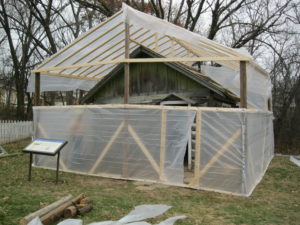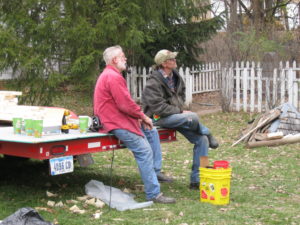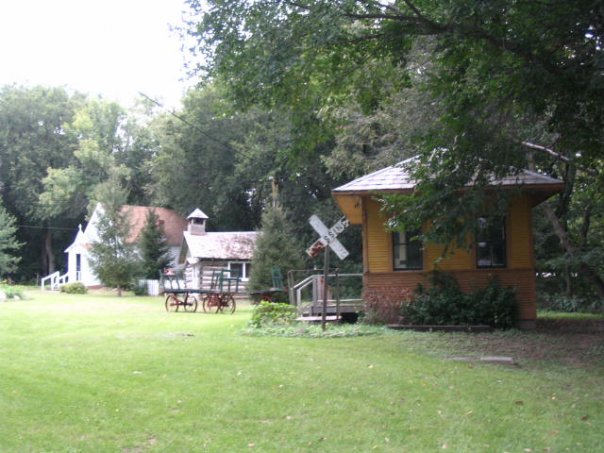
The historic village preserves actual historic structures relevant to southeastern Nebraska, but not necessarily relevant to Nebraska’s piece of the Underground Railroad itself. So while the village itself is not directly related to John Brown, John Kagi, or the Mayhews, it does provide some historical context for museum visitors.
A.M.E. Church
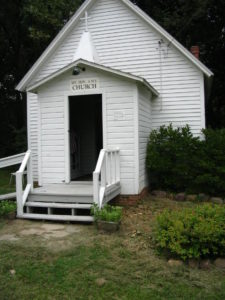
The Mount Zion African Methodist Episcopal Church (A.M.E. Church) was organized in Nebraska City in 1879 and is thought to be one of the first African-American churches west of the Missouri River. The congregation reportedly worshiped at a location near 5th Street between 2nd and 3rd Avenue until a church was constructed on a site located at the southeast corner of 5th Avenue and 12th Street. The Reverend Baker and the Reverend Rivers were two of the first pastors. A fire destroyed the church and a new building was constructed in 1907 on the northwest corner of the lots reportedly nearer to 7th Avenue and 13th Street. Reverend J. W. Thomas became the pastor of the church in approximately 1937, coming into the position with 25 years of pastoral experience. Rev. Thomas was from Oskaloosa, Kansas. When he took the position, the congregation consisted of approximately 25 parishioners. The building served as the community center for Nebraska City’s African-American residents. Various clubs used the facility and it also served as a school. The backs of the pews were designed to flip back and forth to serve both church service seating and school seating. Services ended in the mid-1960s and the building was left vacant. Eventually, the building was moved to the John Brown’s Cave site. The site is now known as the Mayhew Cabin with John Brown’s Cave, a nonprofit museum. The A.M.E. Church is being preserved by the Mayhew Cabin Foundation and can be toured along with the original Mayhew Cabin, the museum, a log schoolhouse replica, and a depot.
Railroad Depot
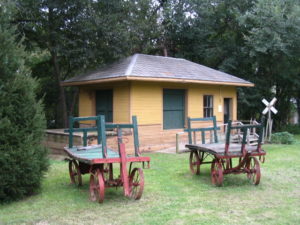
Railroads were the fastest mode of transportation in the 1800’s. Usually, a town’s growth or survival on the Great Plains depended on securing its position along a railroad route. The depot was moved to the Mayhew Cabin site from its original location in Otoe, Nebraska. Otoe was originally known as Berlin (founded in 1880) and the depot was part of the Missouri-Pacific Railway line. The first train to go through the town was in 1883. Passenger trains going through Otoe discontinued in 1932, and the railroad station closed in 1960.
Schoolhouse
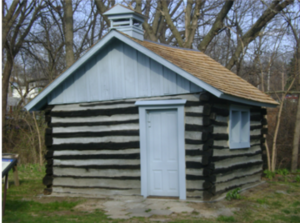
The schoolhouse is the only structure that was not actually used as its namesake at some point in history. Nevertheless, it is an authentic rendition of many historic schoolhouses of the Midwest.
It was moved to the John Brown’s Cave site at an unknown point in time, and the Foundation has no records of why the structure was built.
The Mayhew Cabin Foundation had the building restored by a team led by craftsman Butch Bovier in 2012-2013. The pictures below show part of the process.
